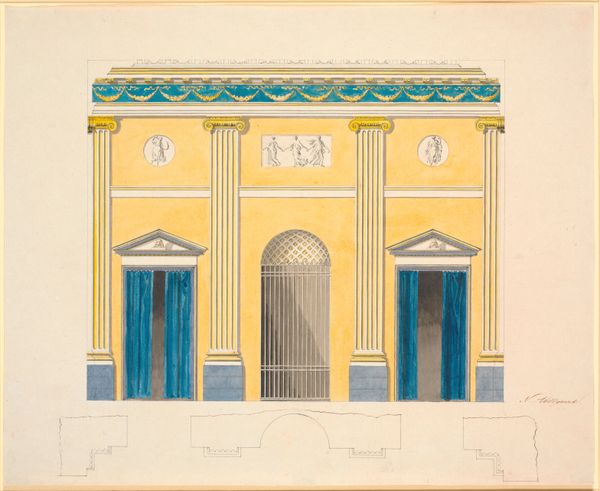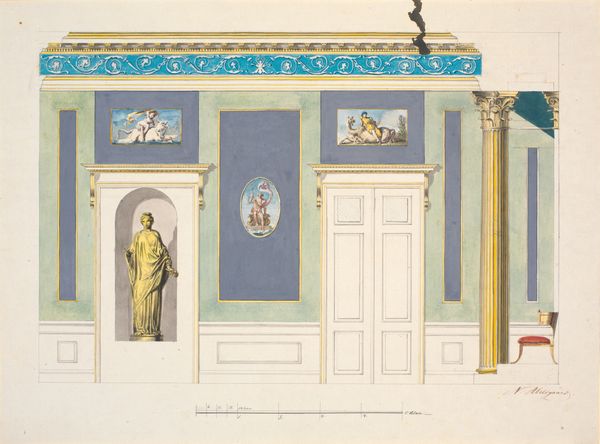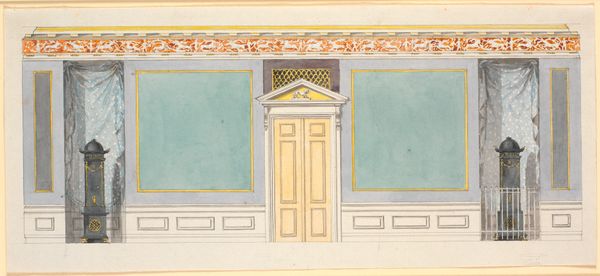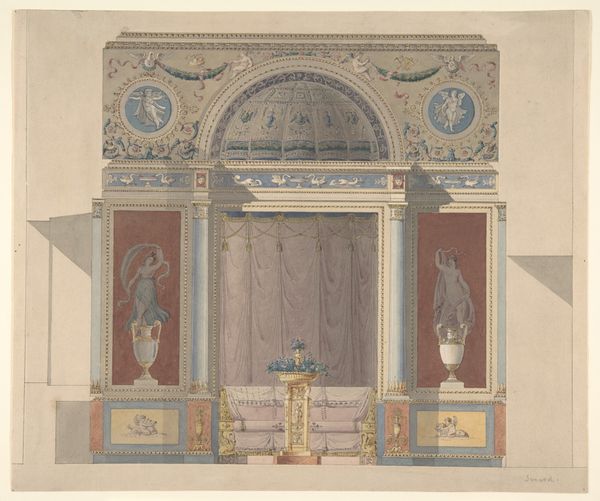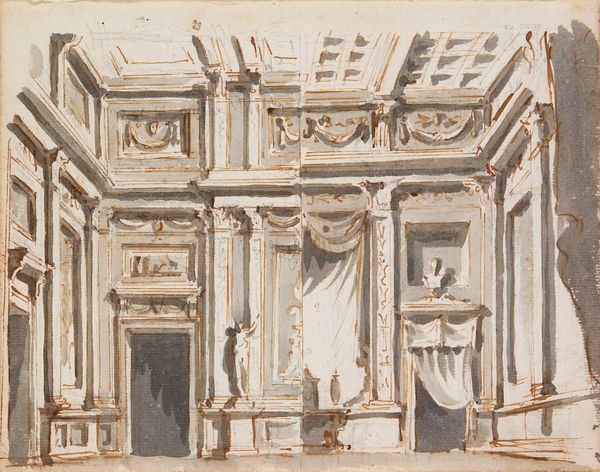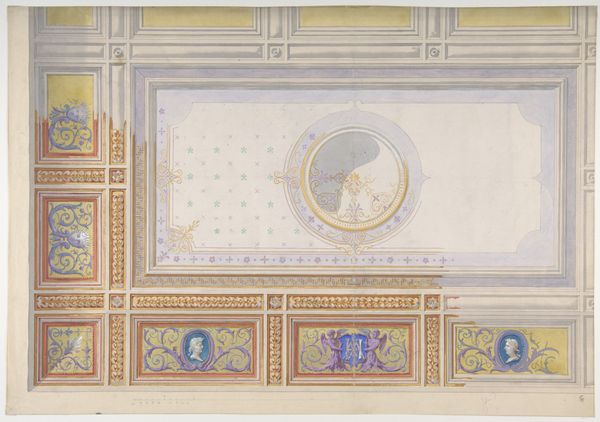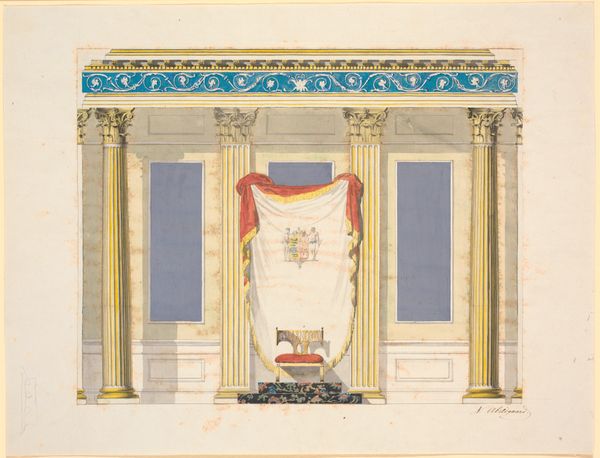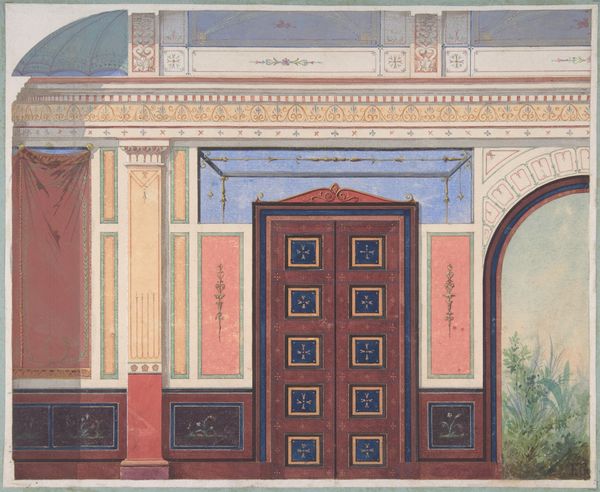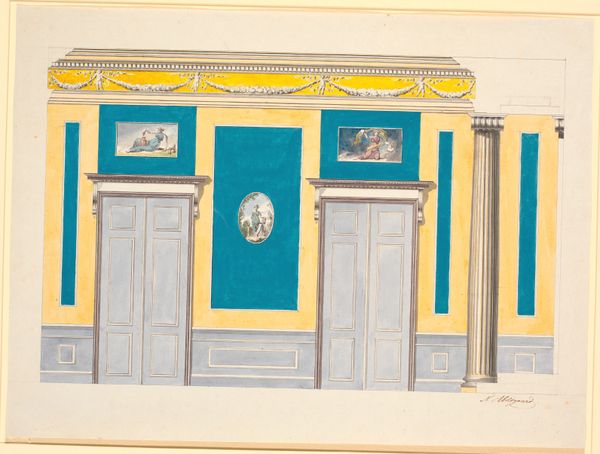
Den indre langvæg. Udkast til dekoration af Riddersalen 1790s
0:00
0:00
drawing, tempera, architecture
#
drawing
#
neoclacissism
#
tempera
#
landscape
#
architecture
Dimensions: 388 mm (height) x 598 mm (width) (bladmaal)
Curator: This tempera drawing is called "Den indre langvæg. Udkast til dekoration af Riddersalen" or "The inner long wall. Design for the decoration of the Knights' Hall," by Nicolai Abildgaard, dating back to the 1790s. Editor: It strikes me immediately as an almost theatrical space. The deep blue curtains at the center pull my eye, hinting at drama and secrets. Curator: Absolutely, and understanding its context reveals so much. This piece offers a look into late 18th-century Danish court society, with its aspirations of power and its embrace of Neoclassicism. It reflects the prevailing philosophies and politics, particularly during the era of enlightened absolutism. Abildgaard’s work, especially these decorative programs, aimed to communicate moral and political ideals. Editor: The Neoclassical architecture itself becomes a symbolic language. Columns evoke ancient Greece and Rome, a time seen as a golden age of democracy and philosophy, ideals the Danish monarchy would have wanted to connect to its rule visually. The careful symmetry suggests order and rationality. And what about those statues in the alcoves, who are they echoing, and how does that speak to the social ideas of the day? Curator: It speaks to how the Enlightenment ideals found expression in visual culture. Abildgaard was fascinated by how symbols like these served a cultural memory. These classical figures offer the viewers access to this visual language, helping to establish continuity between their contemporary time period, and antiquity. It connects a network of cultural and emotional signifiers with each of these forms. The muted color palette evokes both austerity and the elevated taste of the era. Editor: So, even the color scheme performs a certain cultural work. I appreciate seeing the subtle reminders of this symbolic messaging. How these seemingly straightforward classical depictions carry a heavy ideological weight. Curator: Precisely. When viewed through this lens, the image prompts questions about how art can be deployed in constructing national identity and upholding power structures. We must always remember that behind every representation of order and balance, there often lies a complex and negotiated political and social reality. Editor: It gives you much to think about...to consider the quietness, and calculated choices within a very vibrant cultural period, thank you for expanding how I view these elements!
Comments
No comments
Be the first to comment and join the conversation on the ultimate creative platform.
